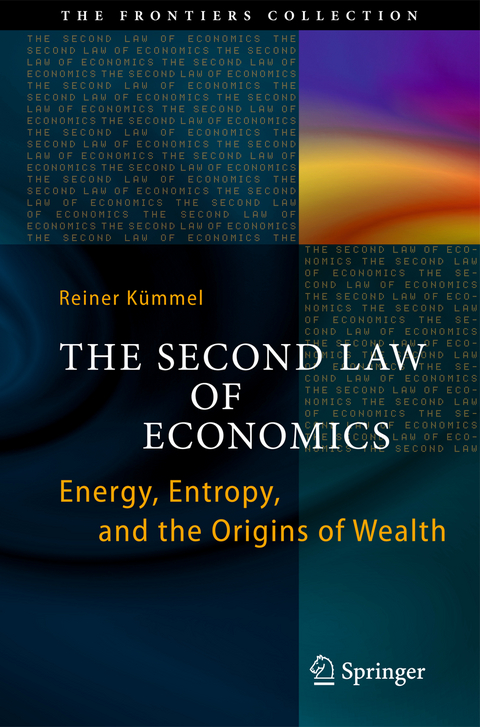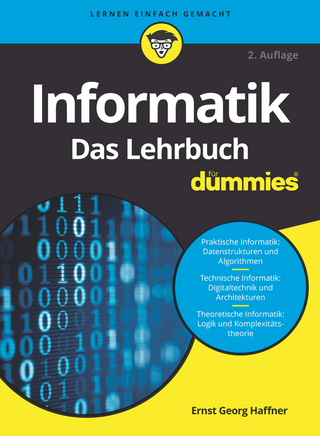The Second Law of Economics
Springer-Verlag New York Inc.
978-1-4419-9364-9 (ISBN)
Chapter 1: PROLOGUE: Time Travel with Abel
From Big Bang to Sun
Light on Earth
As Life Goes
Fire and Grain
Ancient Empires
Wind Power, Gunpowder and Wood
Industrial Revolution
Golden Age
Outlook
References
Chapter 2: ENERGY
2.1 Understanding the Prime Mover
2.1.1 How the Energy Concept Evolved
2.1.2 Energy for All and Forever
2.1.3 Energy Quantity and Quality
2.2 Sun and Earth
2.2.1 Energy Production in the Sun
2.2.2 The Natural Greenhouse Effect
2.2.3 Solar Activity and Climate
2.2.4 Photosynthesis, Respiration and Food Production
2.3 Amplifiers of Muscles and Brain
2.3.1 Heat Engines
2.3.2 Transistors
2.4 Energy Services
2.4.1 Freedom from Toil
2.4.2 Comfort, Mobility, Information
2.4.3 Political Power
2.5 Consumption - and What is Left
2.5.1 Consumption of Energy Carriers
2.5.2 Reserves and Resources of Fossil and Nuclear Fuels
2.5.3 Renewable Energies
2.5.4 Energy Conservation
2.6 Technological Perspectives
2.6.1 Fission
2.6.2 Fusion
2.6.3 Solar Power from Deserts and Space
2.7 Appendix A: Basic Forms of Energy
2.7.1 System Energies
2.7.2 Work and Heat
2.7.3 Enthalpy and Exergy
2.7.4 Thermodynamic Potentials
2.8 Appendix B: Energy Units References
Chapter 3: ENTROPY
3.1 No Free Lunch
3.2 Equipartition, the Toddler and Entropy
3.3 States of Systems
3.4 The Way Things Change
3.4.1 Driving Towards Disorder
3.4.2 Haste Makes Waste: Irreversible Processes
3.5 Arrow of Time
3.6 Entropy Production and Emissions
3.6.1 Sources and Substances
3.6.2 Anthropogenic Greenhouse Effect
3.6.3 Pollution Control and Heat Equivalents of NOX, SO2, CO2, and Nuclear Waste
3.7 Appendix:Non-equilibrium Thermodynamics and Second Law
3.7.1 Gibbs' Fundamental Equation
3.7.2 Balance Equations
3.7.3 Density of Entropy Production References
Chapter 4: ECONOMY
4.1 Complementary Perspectives on the Economy
4.2 Energy, Entropy and the Growth Paradigm
4.3 Pre-Analytic Vision: The Law of Diminishing Returns
4.4 How Technological Constraints Change Economic Equilibrium
4.4.1 Output Elasticities
4.4.2 Shadow Prices
4.4.3 Appendix 1: Maximizing Profit
4.4.4 Appendix 2: Maximizing Overall Welfare
4.5 The Second Law of Economics
4.5.1 Levels of Wealth Creation
4.5.2 The Technological Constraints on Capital, Labor and Energy
4.5.3 Modeling Production
4.5.4 Economic Growth in German, Japan, and the USA
4.5.5 The Productive Powers of Capital, Labor, Energy, and Creativity
4.5.6 Cointegration
4.5.7 The "Useful Work" Approach
4.5.8 Pollution, Recycling and Perspectives on Growth
4.5.9 Appendix 3: Aggregating Output and Factors in Physical Terms
4.5.10 Appendix 4: Explicit Constraint Equations
4.5.11 Appendix 5: Empirical Data of Output and Inputs
4.5.12 Appendix 6: Determining Technology Parameters
4.6 Distribution of Wealth
4.6.1 Adam Smith's Concepts and Karl Marx' Error
4.6.2 Rich and Poor
4.6.3 Taxes and Debts
4.6.4 Discounting the Future
4.7 Summary and Discussion References
Chapter 5: EPILOGUE: Decisions under Uncertainty
Ethics
Reason
References
GLOSSARY
INDEX
| Reihe/Serie | The Frontiers Collection |
|---|---|
| Zusatzinfo | 24 Illustrations, color; 27 Illustrations, black and white; XX, 296 p. 51 illus., 24 illus. in color. |
| Verlagsort | New York, NY |
| Sprache | englisch |
| Maße | 155 x 235 mm |
| Themenwelt | Mathematik / Informatik ► Informatik ► Theorie / Studium |
| Mathematik / Informatik ► Mathematik | |
| Naturwissenschaften ► Biologie ► Ökologie / Naturschutz | |
| Naturwissenschaften ► Physik / Astronomie ► Allgemeines / Lexika | |
| Naturwissenschaften ► Physik / Astronomie ► Theoretische Physik | |
| Sozialwissenschaften ► Soziologie ► Empirische Sozialforschung | |
| Technik ► Elektrotechnik / Energietechnik | |
| Wirtschaft ► Volkswirtschaftslehre ► Makroökonomie | |
| ISBN-10 | 1-4419-9364-9 / 1441993649 |
| ISBN-13 | 978-1-4419-9364-9 / 9781441993649 |
| Zustand | Neuware |
| Informationen gemäß Produktsicherheitsverordnung (GPSR) | |
| Haben Sie eine Frage zum Produkt? |
aus dem Bereich




